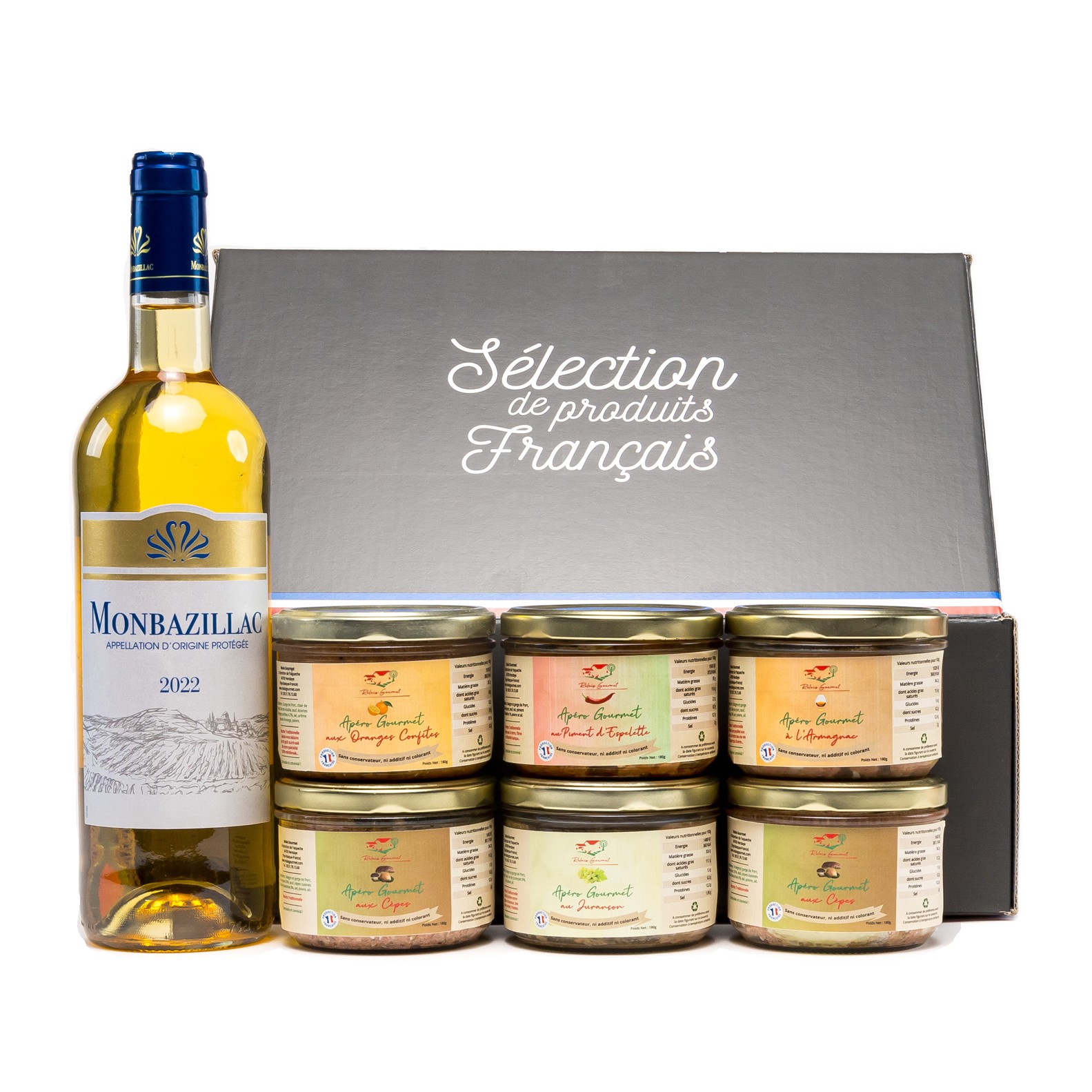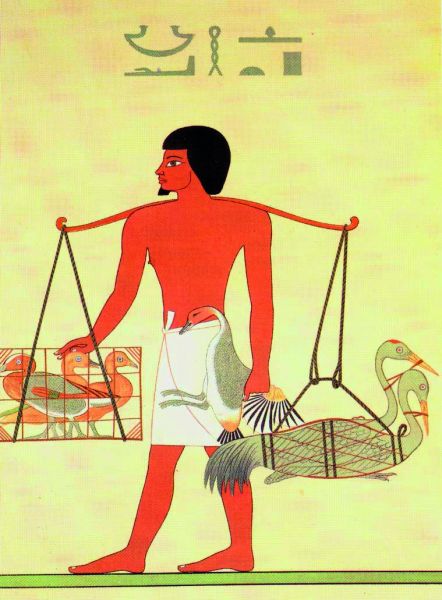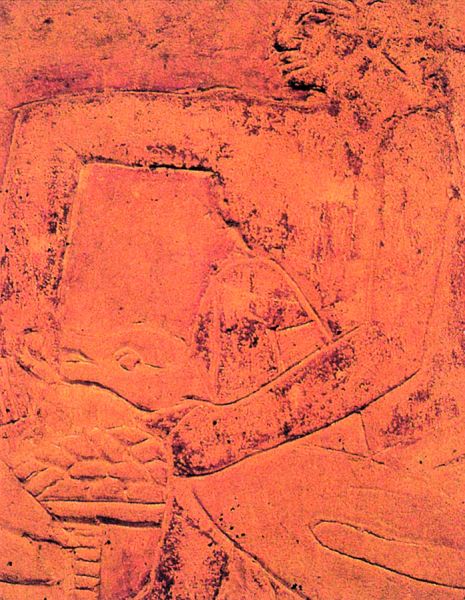
In time immemorial, when men began to settle down, gradually abandoning their gathering and hunting activities, they then undertook domestication, then the breeding of animals for food.
Since the dawn of time, waterfowl: geese, ducks, swans have been bred at all latitudes; ancient authors and artists, painters and sculptors in particular, celebrate in their works this human-animal relationship. The rise of waterfowl breeding and force-feeding has always oscillated between culinary art and vital need. The fat produced by ducks and geese was, in fact, the means for the peasants to feed themselves throughout the year and, thanks to its easy conservation (candying), to make provisions in anticipation of food shortages and other famines.
A dish as popular as Foie Gras, which has become almost “mythical”, inevitably gives rise to some legends or approximate truths. Be that as it may, one thing is certain: the ancient world did welcome waterfowl farms where geese were fattened more than 6,000 years ago! It remains to be seen how the delights of goose liver were discovered…
According to the famous encyclopaedist and historian, Roger Caratini and many colleagues, the “discovery” of the taste virtues of “Foie Gras” is linked to the practice of divination*, widespread in many ancient civilizations. Divinatory practice consists of “reading” the entrails of animals sacrificed to the gods. At the end of these ancestral rites, there is, of course, a “practical” and even “gastronomic” follow-up, since the most noble pieces of the sacrificed animals are dedicated to tasting… Foie Gras is then obviously part of the dishes most wanted.

Our distant ancestors, after discovering the delicious flavor of Foie Gras from wild geese, came to spend the winter in the land of Sumer, between the Tigris and the Euphrates (there are wall decorations featuring geese in Nineveh in Mesopotamia) or near the Nile delta, want to know more about it… Greedy and curious to know the secrets of this imposing and delicious liver, the Egyptians (among others) decide to observe the behavior of the migratory bird. Their patience is rewarded when they notice that the geese, to “fill up on energy” and prepare for this long journey that is migration, gorge themselves on food, much more than usual… (the weight of some migrants even increases by 50%). The Egyptians then understood that geese created “Foie Gras” by accumulating fat in this famous organ, a real “fuel” for their long journey!
* The haruspices

Obviously, to be sure to keep these incredible dishes close at hand, the waterfowl are, little by little, domesticated. Testimonies of animal husbandry and force-feeding practiced, for example in Egypt (ancient empire 2845-2400 BC), archaeologists have discovered many bas-reliefs recounting these processes in Giza. In Saqqara, near the current city of Cairo, tombs of viziers reveal the activity of breeding waterfowl. For example, scenes present a perfectly developed force-feeding method. Then, it was probably the Greeks who transmitted the taste of Foie Gras to the Romans. Later, the Hebrews carried on the breeding and force-feeding tradition of their ancient Egyptian masters. Coming from Palestine, after crossing the Red Sea, they will later disperse in Europe, notably in Hungary, Bulgaria, Poland and France.
“In the Louvre Museum in Paris there is a reproduction of this real comic strip: under the eyes of a deceased and his son, the barnyard passes by: Geese, ducks show how these ducks and geese are stuffed… and even cranes: seated on the ground, two servants prepare a dough in a pot with a rounded bottom, placed on a tripod. One of the boys is holding a funnel (…). His companion rolls the dough between his hands and forms small regular sausages. Let’s move on to another view: The sausages of dough have been well arranged in a cup, all that remains is to take them as you go to push them into the bird’s beak. With a movement of the fingers around the neck of the goose, as in a massage, we help swallowing. Next to the feeders, containers contain a liquid, perhaps oil to make the food slide better? A whole population of geese and ducks, a little further on, seems to be impatiently awaiting this feast. Some are already craning their necks. Others flap their wings. Or drink, visibly sated. » The natural and moral history of food, Maguelonne Toussaint-Samat, Bordas editions 1987.
This Latin naturalist then put forward two names: Scipio Metellus and Marcus Seius, men who had distinguished themselves in the previous century in the art of fattening geese. Petronius in his “Satiricon”, Martial, Latin poet, Juvenal with his “satires”, Apicius in “culinary art”… all these Latin authors from the 1st century BC. J.-C. are surprised by the excellence of foie gras. Apicius even invented a precise, very elaborate recipe for preparing Foie Gras, proposed in his book “de Re Coquinaria”. Other authors, such as Cato, Varro, Celse or Palladio, even go so far as to provide fattening advice. The geographer Strabo refers to the goose-feeding guardians of Aquile whom he even nicknamed the “goose men”: the “Anserarii”.
In the 17th and 18th centuries, the demographic development of the French countryside led the South-West of France, among other things, to undertake new crops: corn, potatoes… which, moreover, were not taxed; the breeding of waterfowl then took on real economic importance, as evidenced by numerous books on agriculture and rural domestic economy. From time immemorial, products from fatty palmipeds constituted the diet of peasants in the East (Alsace) and South-West: in particular fat, meat and Foie Gras were kept in stoneware pots, in order to meet the needs of winter. The breeding methods for geese and ducks will then see the invention of the embuc (piston funnel). Foie Gras will begin to be sold in markets, providing a source of income for farmers.
It was during this period that the revival of the culinary art, associated with Foie Gras, became clearer. Strasbourg and Toulouse then competed for the title of Capital of Foie Gras. In the 19th century, the great “houses” of Foie Gras developed. Many towns in the South-West became important centers of what are known as the “Marchés au Gras” and some famous markets still exist today: Samatan, Brive, Pomarez, Gimont, Périgueux, Sarlat, etc. They still have a great reputation. The South-West and Alsace are regions known throughout the world for the high quality tradition of their Foies Gras, among others. Everywhere on our continent and of course in France, the goose was raised in abundance (Poitou, Vendée, Normandy, Picardy etc.); Some of these regions have naturally integrated, over time, with rigor and success, the traditional methods of production of Foies Gras. Currently, many Eastern European countries have Foie Gras waterfowl farms.
Find out more interesting facts about Foie Gras and the Basque Country on our Blog and tasty recipes in the Recipe section of our website!
Sources : la grande histoire du foie gras de Silvano Serveti, éd. Flammarion 1993 et L’oie (titre original : Oca) ed. Konemann, 1998